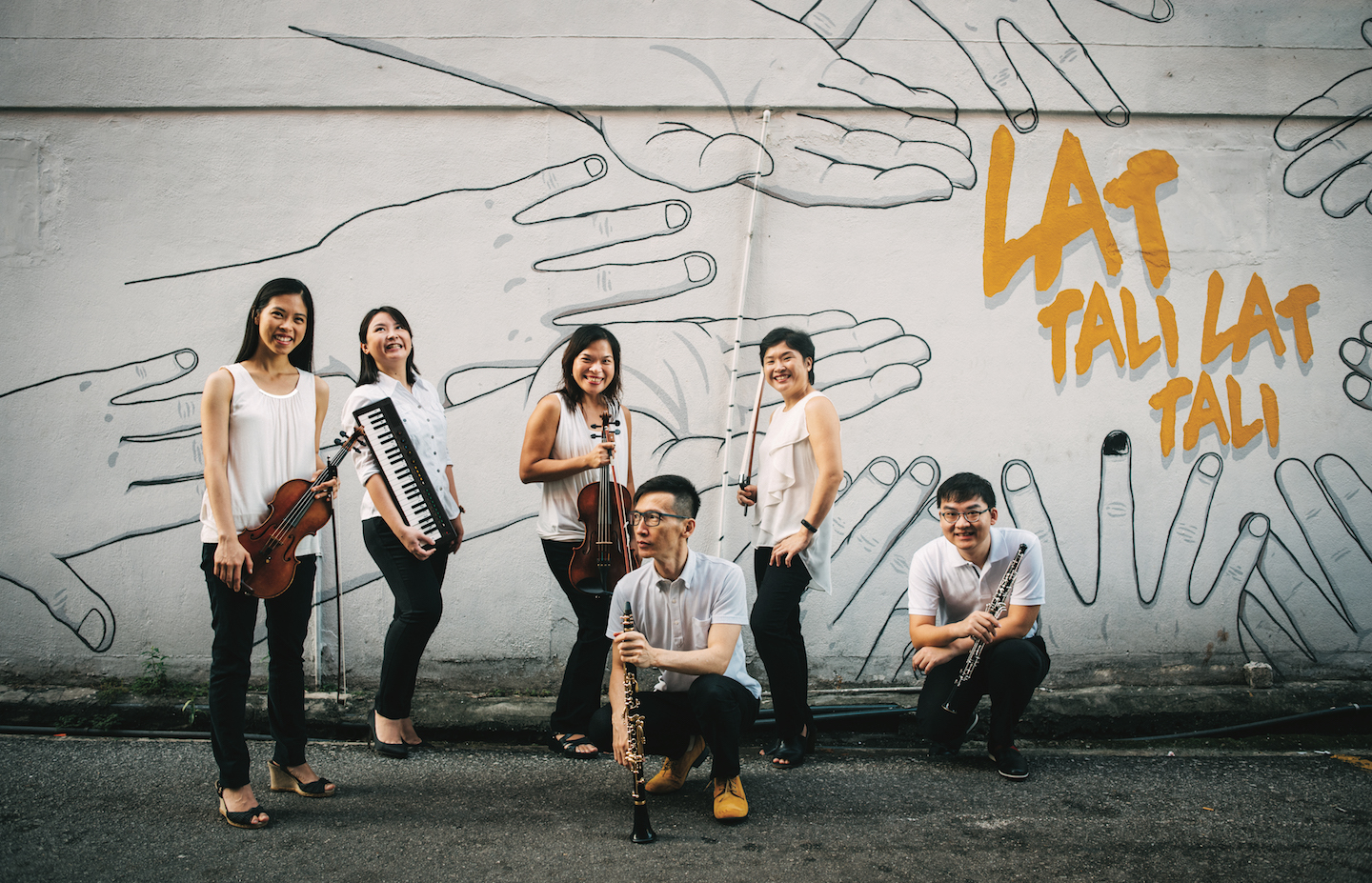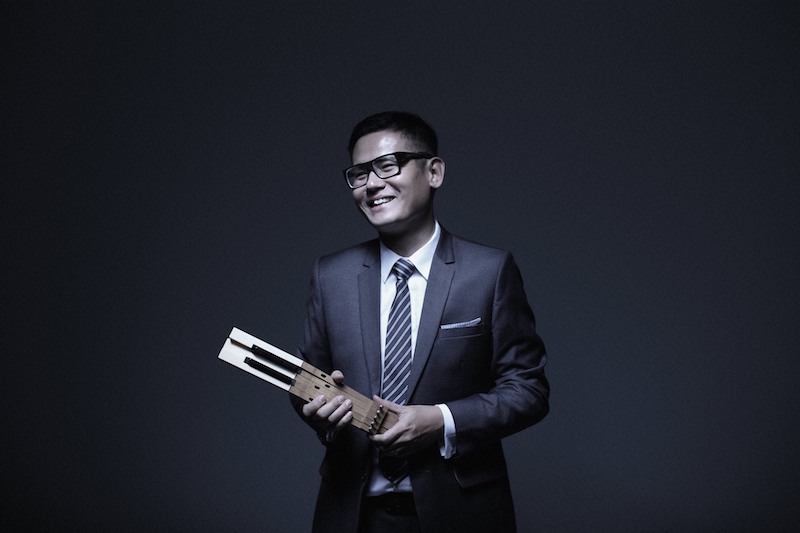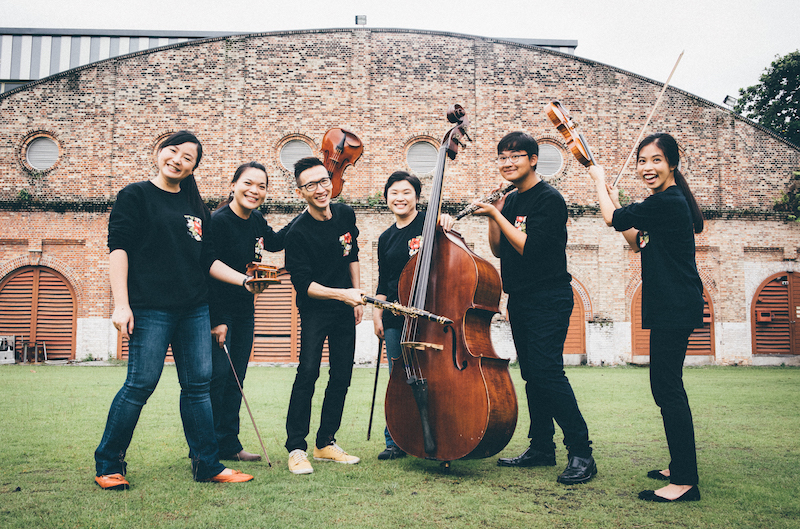
Virama Ensemble is one of the few chamber music ensembles in the country (Photo: Virama Ensemble)
During a converstion we had two years ago, Germany-based Malaysian conductor Harish Shankar said spontaneity and enjoyment are crucial in order to develop good musicianship. Citing his own discovery of chamber music when he first arrived in Europe — where music is played in small rooms, homes and even on the street in every locality — he felt the exam-driven education of music in Malaysia lags behind Europe’s.
I thought of Harish’s remark recently when I was talking to Howard Ng, the oboist who founded Ensemble Virama in 2015, along with five other Malaysian classical musicians.
One of the few chamber music ensembles in the country, the group’s core members are Ng, pianist Yong Sue Yi, violinist Bernice Ooi Khai Ern, clarinetist Lawrence Fong Yee Seong, violist Angela Lou and bassist Eugenia Lou.
Apart from Fong, a member of the Malaysian National Symphony Orchestra, and Ooi, who is with the Royal Swedish Orchestra, the other core members are all freelancers, though each is an accomplished musician with extensive orchestral and performing experience locally and abroad.
They are connected through their friendship with Ng. The Lou sisters performed alongside him when the three were in the Malaysian Philharmonic Youth Orchestra. Yong was Ng’s senior at the Yong Siew Toh Conservatory of Music at the National University Singapore, where the latter now works in the programming and productions department. Fong and Ng were together in the National Symphony Orchestra (Ng was the principal oboist) and Ooi is a friend who wanted to do something together in Malaysia after years spent abroad. The group shares a mutual desire to play music at a “higher level” in a more intimate setting, where each instrument counts.

“It takes a lot of courage to play chamber music because you expose yourself to close scrutiny and judgment every time you play. Each musician makes a unique contribution, as opposed to a large symphony orchestra where you may have 20 violinists, for example,” says Ng of
Virama’s unique identity.
Apart from pushing forward smaller musical forces, the Kota Kinabalu-born oboist says they believe what differentiates Virama is their approach to programming.
“One of our principles is that we treat music as a functional art form. People often say that they like one type of music but dislike another. This is also how the market functions — if you enjoy it, it must be good music. If not, it’s bad.
“As an ensemble, we do not see it that way because factors such as the setting in which you listen to music, the atmosphere, or, if it is in a movie, the acting — all these affect your experience.
“By functional, we mean we do not just play music to entertain, or only if it is beautiful … the choice of programme always ties into a wider theme or idea. We have done shows to educate, to provoke a certain emotion or even to make a political statement,” Ng says.
For a better idea of what he means, one need not look further than Virama’s first showcase of the year, Murakami: Hear the Wind Sing. A collaboration with jazz pianist Tay Cher Siang — whose jazz outfit WVC did a concert based on the works of Japanese author Haruki Murakami — the classical performance will similarly draw cues from his writing.
It is not just about vaguely selecting a few compositions to play, as it may appear. There is a reason why the ensemble is collaborating with Tay, who will perform three songs and narrate the show.
“Apart from the admiration we have for Tay and his work — we commissioned him for a concert in 2017 and have since remained close to him and WVC — about six months ago, we learnt that he is a very passionate Murakami reader, so much so that he has been invited to give lectures and participate in forum discussions and seminars on Murakami’s writing.
“When we heard WVC’s jazz concert last year, we thought we could do a classical version of it. Murakami is a huge fan of music of all genres and in his books he mentions The Beatles, Beethoven and Herbie Hancock side by side. We also know he was a big record collector, and that he had about 10,000 LPs at one point,” says Ng.

Indeed, multiple articles have been written about the novelist’s use of classical music as references in his writing — be it linking the history of a composition to the literature it inspired, or to evoke the theme of the book, often when words fail to adequately convey the breadth of the emotion he is trying to express.
Ng says there is a lot of similarity between the lineage of music composition and that of literature. Just as Murakami was often inspired by romantic literature, classical music is built on the works of predecessors. At the same time, literature has had a significant influence on the history of music, such as the Sturm und Drang movement.
“Johann Wolfgang Goethe’s work, Faust, for example, influenced composers like Franz Liszt and Robert Schumann. In turn, Franz Kafka had a big impact on Murakami,” he says.
Interestingly, on Murakami’s website, there is a database listing the musicians songs and albums mentioned in his books. Suffice to say, the number is very large and the pieces wide-ranging. Tay and Virama spent about four months looking through it to select and finalise their programme.
Among their criteria was the compositions had to be playable by six instruments or less and fit the narrative flow Tay had in mind in terms of the books.
The result is eight pieces: Mozart’s Violin Sonata K 377, Ravel’s Pavane pour une Infante Défunte, Debussy’s From Preludes Book I and II, Schumann’s Waldszenen Op 82 — Vogel als Prophet, Liszt’s Tristia, From Vallée d’Obermann (III) and Bach’s Ricercar a 6 from the Musical Offering.
Ensemble Virama is also giving its first international performance this September in Singapore as part of the celebrations of the bicentennial of the founding of the city.
But the group’s passion remains rooted at home. Describing this as an exciting time for classical music in Malaysia, Ng says, “Some people say classical music is dying but that is absolutely not true. You only need to go online to see the growing interest on Facebook or YouTube. The same is happening in Malaysia, I feel. The audience has grown bigger and, more importantly, they have become more sophisticated. They don’t want just a simple presentation — they know what is good and what concerts to go to. Of course, the challenge of growth still exists, which is why our next step, apart from improving our funding, is to commit ourselves to more educational projects.”
Fong and Ooi will be sitting out this showcase, which will instead feature guest performers Julian Ong (clarinet), Low Kiang Wen (cello) and Wong Lu Ee (violin).
'Murakami: Hear the Wind Sing', Deciso, 3-G Jalan Margosa SD10/4A, Bandar Sri Damansara, KL. May 4-5, 3pm. RM50. Purchase tickets here.
This article first appeared on Apr 29, 2019 in The Edge Malaysia.


